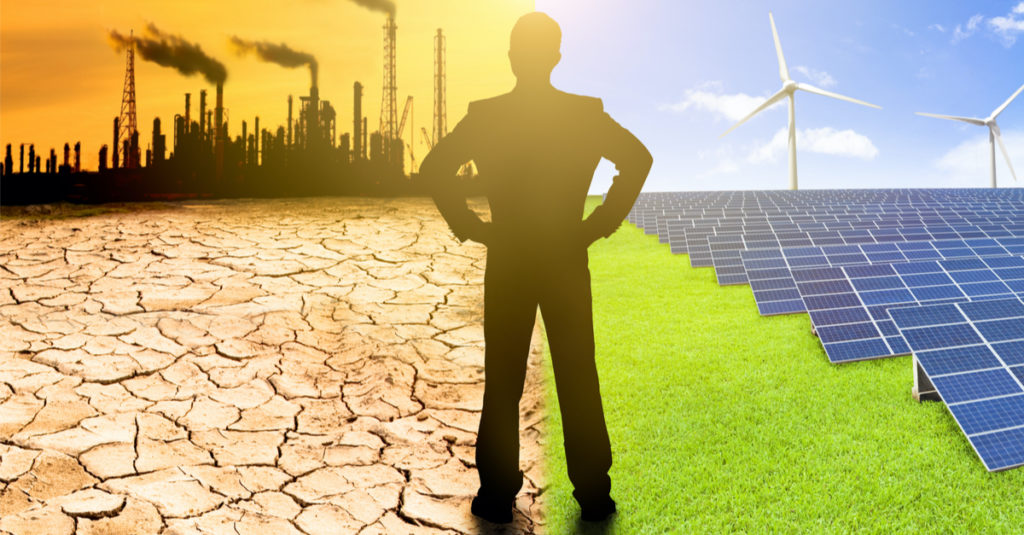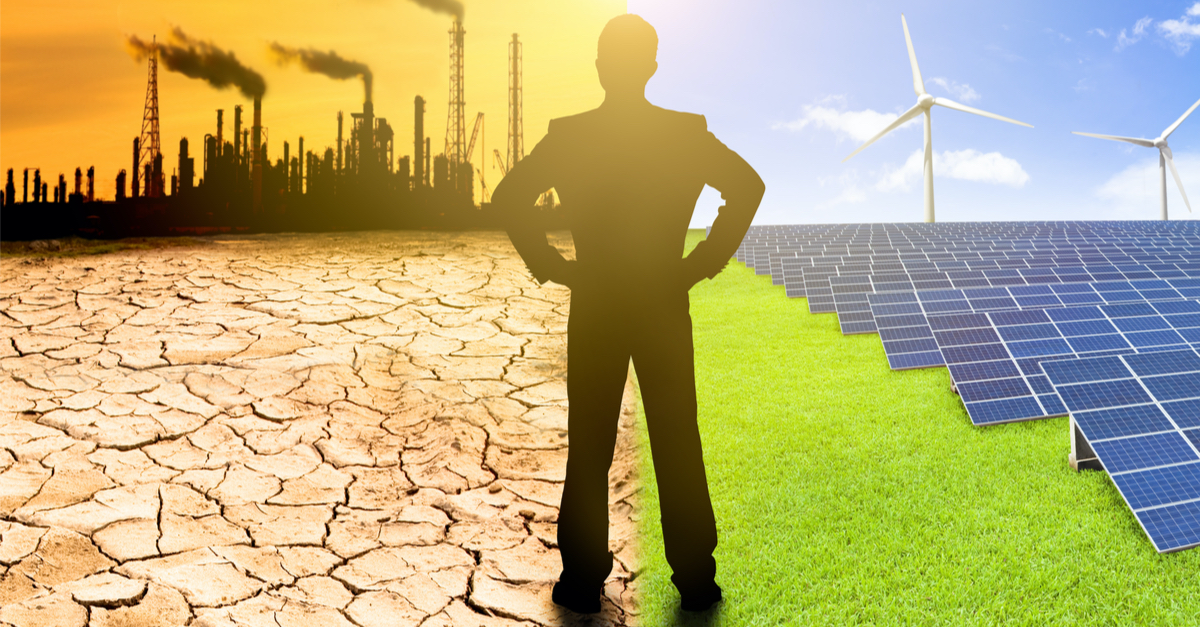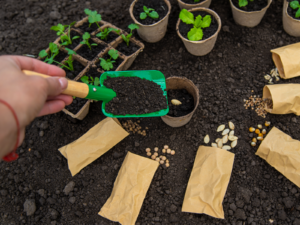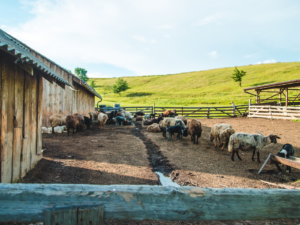
Berytech has been working with experts as well as the public and private sectors to identify a list of challenges within the cleantech sector, as we believe that these challenges can fuel and initiate a broad interest in the sector.
In our first article in our Cleantech Series, we explored why clean technologies were taking center stage in innovation indexes worldwide and the kind of opportunities cleantech innovations presented in an energy-challenged country like Lebanon.
In the second article, we shed light on the different policies, initiatives and projects from the different stakeholders in the Cleantech sector in Lebanon.
In this third installment in the Cleantech Series, we delve into the different challenges identified by the experts we have been working with. These should inspire our Lebanese entrepreneurs and startups to innovate in the sector, specifically in Renewable Energy, Waste Management and Water and Wastewater.
Renewable Energy

Opportunities to innovate lie in energy creation solutions (wind, solar, water, biomass), energy efficiency and optimization, and resource management systems. We have identified nine challenges and what is needed concerning automated water heaters, solar panel positioning and functionality, household water systems, photovoltaic electricity, streetlights, biogas, solar farmlands, and windmill farms.
Challenge 1: Automated Water Heater
Shifting between the use of a solar-powered water heater and the auxiliary boiler depends on timing and the weather forecast. The process needs to be automated to optimize the use of both.
What is needed: Can a low-cost system be implemented to monitor the weather conditions and automatically turn on/off the auxiliary boiler when needed?
Challenge 2: Solar Panel Positioning
Maximizing solar energy use requires that solar panels be positioned in a way to capture most of the light. There is a certain inclination angle for the panel to fit the sun path. Technologies are available abroad such as Solar Trackers – devices that orient the solar panels or other payloads towards the sun. But such trackers are costly and work mostly for businesses.
What is needed: How can such solar trackers be accommodated for solar panels for home use? Is there a way to develop a lower-cost inclination tool with sensors to arrange the inclination angle according to the sun path?
Challenge 3: Solar Panel Functionality
Solar panels are made up of cells and some are designed in a way that if one cell is not functional, the whole panel becomes dysfunctional. This could be due to the breaking of the cover from weather conditions or blurring due to shading from sand or bird feces.
What is needed: Is there a way to develop a system to detect the cells irregularities and mitigate or resolve them before the whole panel stops?
Challenge 4: Household Water Systems
Legionella is bacteria found in stagnant waters that flourish in temperatures between 20°C and 45°C. It is usually found in both potable and non-potable water systems and can cause Legionnaire’s disease, which is a severe and often lethal form of pneumonia. There is a need to have an automatic circulation of water to prevent it from being stagnant.
What is needed: How can a system be designed in a way to shake the water (sensor as an alarm when it’s stagnant) and help prevent it from infiltrating into household water systems? Can a timer be created for the water pump or a low-cost sensor that could be installed for households?
Challenge 5: Photovoltaic Electricity
During the day, houses with solar panels can produce more electricity than they actually need. Any unused or surplus solar electricity can be fed back to the grid. This approach will allow the solar panels owners to “sell” their unused electricity and will provide a modular and distributed generation for the grid. However, connecting to the grid has many challenges and it requires advanced automated systems
What is needed: How can smart technologies be used to indicate when to feed back to the grid? How can technology be used to monitor the share of households in any village in power plants and accordingly aid in ensuring all households have equal access to electricity?
Challenge 6: Street Lights
There is a need for better management of the street lighting grid. Solar street lights are becoming a challenge as they are lit at all times, and the only solution is to either have them all on or all off.
What is needed: Is there a possibility to have a smart grid for street lights to control the lighting and save on energy by cutting at least 1 hour a day, continuing the process until the optimal lighting time is reached and then adjusting accordingly?
Challenge 7: Biogas
Biogas is an important source of renewable energy for Lebanon and one with untapped potential, but the cost of investment is a barrier and there is a need for a strong local partner, such as a municipality, to be able to engage in such a project. Added to that, is the volume required to make it a profitable business.
What is needed: How can forestry and forest residues be collected and processed, in large volumes, to generate energy whilst creating employment and incentivizing reforestation? Also, can there be potential in technology to generate biogas from cow or chicken manure, and to be re-used as a source of energy for heating the farms?
Challenge 8: Solar Farm Lands
By the year 2021, Lebanon is expected to have three major solar farms set up and operational, generating between 70 to 100 MW each. The farms will be spread across large areas of agricultural land.
What is needed: Are there opportunities to utilize the area under the solar panels to facilitate the growth of new crops and make better utilization of the space?
Challenge 9: Windmill Farms
Wind farms have a large potential in Lebanon, with 3 windmill farms under construction in Akkar set to produce around 200 MW of energy. However, some challenges arise with such new sources of renewable energy that may have an impact on the biodiversity and livelihoods of the population in such areas.
What is needed: Bird movement would negatively be affected posing danger to their lives, so what can be done to drive the birds away from such windmills? Additionally, cables run between one windmill and another need to be installed inland. What can be done to maximize the use of the land and can certain crops be planted to provide additional sources of livelihoods?
Water & Wastewater Management

Water management solutions are one of the dominating opportunities in the industry. We have identified four challenges and what is needed concerning regional water establishments, solar energy in irrigation, wastewater sludge, and valorizing organic waste.
Challenge 1: Regional Water Establishments
With the help of international organizations, regional water establishments have been changing at the managerial and financial levels to improve governance and performance. However, they still face the negative perception that public service entities in Lebanon are inefficient. Despite being financially autonomous, such water establishments do not have direct relationships with their customers. They also do not have the culture of service provision and customer orientation. However, they have recently engaged in social media efforts to change the negative perception and build trust with customers to increase their willingness to pay for their services. Yet, their databases of customers are not consolidated. Additionally, customers who do not pay the water fees are untraceable, so very little planning can be done.
What is needed: How can technology help to work around data control and consolidation of databases to avoid bureaucracy and have more efficiency in customer relationship management? How can linkages be created among the different water establishments, such as the use of an open-source platform, to induce better planning and coordination?
Challenge 2: Solar Energy In Irrigation
There is a controversy in Agriculture that relying on solar energy for pumping water for irrigation can also lead to overuse and an increase in the exploitation of groundwater sources. Water-saving technologies have been promoted in Lebanon, such as drip irrigation and hydroponics, adopted with the support of donor projects. There is an awareness increase among farmers to use water-saving technologies. However, farmers are keener on how much energy is needed to access and utilize the water (transport). There is a need for an integrated solution where solar water pumps are accompanied by water-saving techniques.
What is needed: How can technology be utilized to monitor water use in Agriculture to reduce over-exploitation and demand from groundwater resources?
Challenge 3: Wastewater Sludge
In wastewater treatment, the sludge that is generated is mainly calcium carbonate and can be used in cement factories, animal farms (to reduce wetness and humidity) and paint industry. However, there is no proper collection system to collect the sludge and add more value to it for re-use.
What is needed: How can the generated sludge be valorized and made useful for other local industries?
Challenge 4: Valorizing Organic Waste
The organic material or by-products of wastewater treatment are unused and dumped in quarries or landfills. This also applies to whey that is generated from the dairy industry, which can be used as a protein source in animal feed, but currently available in lower volumes, and scattered along the regions.
What is needed: What can be done to valorize and make use of organic by-products in co-composting (integrating manure with sludge)? How can technology help in valorizing the whey generated from the dairy industry and re-use it in different industries?
Waste Management

Uncontrolled dumping of waste all over the country has caused water and soil contamination, numerous health and environmental problems and increased GHG emissions. We have identified seven challenges and what is needed concerning medical waste, batteries, household waste reduction and compression, improved collection system, agriculture waste, and construction waste.
Challenge 1: Medical Waste
Hazardous waste, that is mostly toxic and infectious from medical labs and hospitals, is collected and treated by arcenciel. Currently, arcenciel collects 95% of the medical waste, an average of 13-14 tons per day. Ideally, those should be recycled and re-used in clinics and other, but are now sent back to municipalities and then dumped in landfills. For cytotoxic waste (cancer medication and others), around 45 tons are treated per month but sent to Germany for incineration. Pharmaceuticals also get treated in the same way, an average of 2 tons per month and once treated, sent to Greece for incineration.
What is needed: There is no technology yet put in place to sort and treat the waste locally, so what local technology can be developed to further recycle this waste rather than it being dumped?
Challenge 2: Batteries
Lithium batteries and other types of batteries used for cars, solar, and households, face ambiguous destinations. There is no data available on the process of the collection and treatment on this type of waste, but what is being done currently for car batteries is collection, extraction of valuable substances (plastic, other) and then dumping of the acid in agriculture land or rivers, infiltrating groundwater. It is estimated that 20% of the batteries are treated this way, while the remaining 80% is unknown. The current solid waste management strategy does not include treatment and recycling processes for batteries (sorting, storage, treatment). However, there have to be different solutions, given that the future is for hybrid cars, and an already flourishing solar energy, as a renewable source for energy across Lebanon.
What is needed: How can technology help with the prevention of dumping toxic acid in agriculture lands, severely affecting soil properties and fertility whilst polluting groundwater?
Challenge 3: Household Waste Reduction
There are different initiatives carried out for sorting and treating household waste, but there are no incentives set to reduce household waste or encourage households to reduce the production of organic waste. Official figures estimate that there is excessive production of waste at the household level: 1kg waste/person in cities, and 0.6-0.8 kg waste/person in rural areas. Currently, 55% to 80% of household waste is organic.
What is needed: How can waste be reduced to improve the environment rather than ruin it? How can technology help households reduce waste using sensors, IoT or other?
Challenge 4: Household Waste Compression
Most of the garbage collected at the household level is large in volume and has to withstand some time before collection from service providing companies. Sometimes due to the large volume and delays, residents mix all their waste and throw it away.
What is needed: Is there a way to create a residential kit to compress waste, thus allowing for large volumes to be stored and prepared for the collection companies?
Challenge 5: Improved Collection System
Waste management companies, such as Ramco or Lavajet, conduct periodical collection trips across the different neighborhoods in urban areas, with some areas producing more waste volumes collected than others. For example, they might go to one neighborhood in Beirut that does not have a lot of garbage, while stalling collection for other neighborhoods that may need urgent collection.
What is needed: Could there be a smart bin system installed in a way that would allow for improved efficiency in collecting waste and signaling the companies that would also create automated routes for collection trucks?
Challenge 6: Agriculture Waste
Agricultural waste, as defined by the United Nations, is all the waste produced as a result of various agricultural operations. This includes manure, wastes from farms, poultry houses and slaughterhouses; harvest waste; fertilizer run-off from fields; pesticides that enter into water, air or soils; and salt and silt drained from fields. Instead of leaving it untreated and dumping it, it’s critical to tap its potential whether via recycling or via useful products extraction.
What is needed: How can waste from agriculture be treated to be re-used in Agriculture? What solutions exist or can be developed to address such potential in Lebanon? Can it be used as a source of energy for the farm?
Challenge 7: Construction Waste
Lebanon does not recycle its waste from construction. The majority of waste generated from construction sites end up in dump fills or the sea, and only a small portion is recycled. Because of that, heavy metal pollution in seawater is increasing, evident in the high levels found in water samples collected from Ain Mreisse location. With no factories to recycle construction waste, smart solutions need to be created to make use of a large portion of this waste.
What is needed: Can technology help in the identification and management of such waste before it gets to the dump fills, thereby reducing the amount wasted and recycling those that can be recycled using local facilities available?
Learn more and apply to the Berytech e-hackathon – Cleanergy.
Cleanergy Accelerator Program
Berytech is catalyzing cleantech innovations through a yearly three-phase program that allows cleantech entrepreneurs grow their startup from an idea into a scalable business. With the support of The Kingdom of the The Netherlands, Berytech designed and developed the Cleanergy program to make sure Lebanon has the most competitive companies innovating in clean technology. Learn more about the Cleanergy Accelerator Program.








